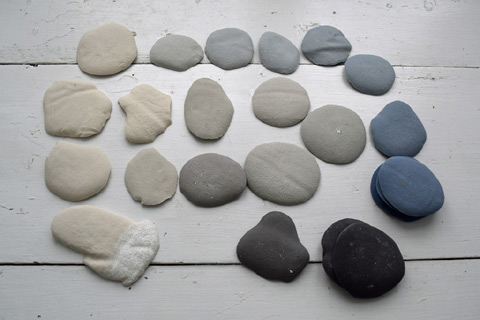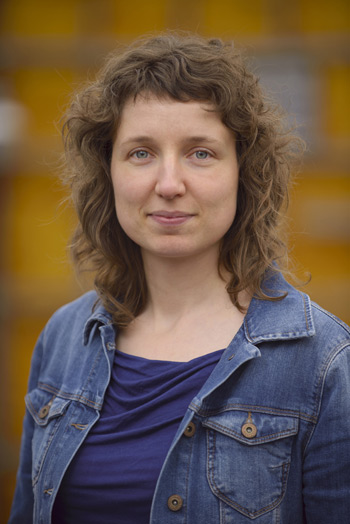Returning to Canada after a three month residency at the European Ceramic Work Centre (EKWC) in the Netherlands, ceramic artist Amélie Proulx (MFA ’10) visited NSCAD University’s Port Campus to conduct research before heading home to Quebec.
Inspired by German porcelain, which is made using a secret recipe and with ingredients impossible to find in Canada, the NSCAD alumna hopes to create a superior porcelain recipe to the one she is currently working with.
Amélie mixes all of her own porcelain by hand and when fired; her current porcelain recipe turns a yellow hue whereas the German porcelain is white once it’s fired.

“I’m trying very subtle changes in [the porcelain recipe] because it already has beautiful plastic qualities and a good body, like all of the qualities you want to have in good porcelain, but it’s just a matter of changing its visual qualities,” she said in the glazing room of the ceramics department.
Her process begins with mixing her porcelain from the raw materials and then dividing the porcelain into smaller amounts. Then she adds a specific percentage of a coloring oxide or pigment to the porcelain or modifies the kiln hoping that the colour will be a little whiter and a little less yellow.
“I proceed in a very methodical way. I use methodologies developed for ceramicists so that I can easily reproduce my results. However, the hypothesis that I developed is much more intuitive,” said Amélie.
“I try to work based on the knowledge that I have and I imagine that if I do this slight change that I might get to the result that I want to achieve, but then I need to test it. It’s still an empirical process in that sense.”
This research is important to Amélie’s work because she does not use premixed clay. She enjoys engaging with her materials and questioning them.
“I always mix my own porcelain from raw material; it’s not a clay body that I buy all pre-mixed. I do that because it gives me a huge freedom of what I can do or change instead of pre-mixed clay body that I have to use as it is. When I mix it I can add some colour into it or add some materials that’ll make it more plastic or less so that I can work with it in different ways. So I can throw it if I want, I can hand build, I can cast and it’s a compatible,” she said.
Amelie’s work for the past few years has focused on transforming the material and pushing the perception of ceramics.
“Basically I always start with the premise that clay when it’s wet can be modified over and over again, but as soon as you fire it, it becomes ceramics and it becomes that hard, strong and permanent material that is immutable overtime. What I`m trying to convey with my work is this idea that even if I fire this clay and it becomes ceramic it still can be transformed. So I suggest it can be transformed in different ways and I often integrate movements into my work to suggest that transformation,” said Amélie.
Another big focus of Amélie’s research right now is working with the acoustic properties of porcelain. She’s experimented with sound and porcelain in the past, creating beautiful sounds, but is challenging herself by creating unique and not so appealing sounds.
“What I would like to eventually do is use one of the sculptures that I’m working on or installations that would made out of porcelain or tiles, they would be inclined at different angles and would move. On top of these tiles there would be different porcelain components that would slide and roll and generate different sounds and these different parts in the work, when activated all together, would create a composition.”
 When I think my MFA, it was two amazing years of my life. I really enjoyed NSCAD; I really enjoyed the facilities here and the freedom that I had to go in the direction that I wanted to go.”
When I think my MFA, it was two amazing years of my life. I really enjoyed NSCAD; I really enjoyed the facilities here and the freedom that I had to go in the direction that I wanted to go.”
With an incredibly busy winter ahead of her, including solo shows, several group exhibits and another trip back to the Netherlands, Amélie was happy to spend a few days at NSCAD.
A Starfish Student Art Award winner, she reminisced about her grad studies at NSCAD, saying, “I had an amazing time here. I think my MFA, it was two amazing years of my life. I really enjoyed NSCAD, the facilities here and the freedom that I had to go in the direction that I wanted to go.”
In 2015, Amélie has three solo exhibits taking place Centre d’exposition CIRCA in Montreal, Centre d’artistes Langage Plus in Alma and Espace Parenthèse in Québec.

